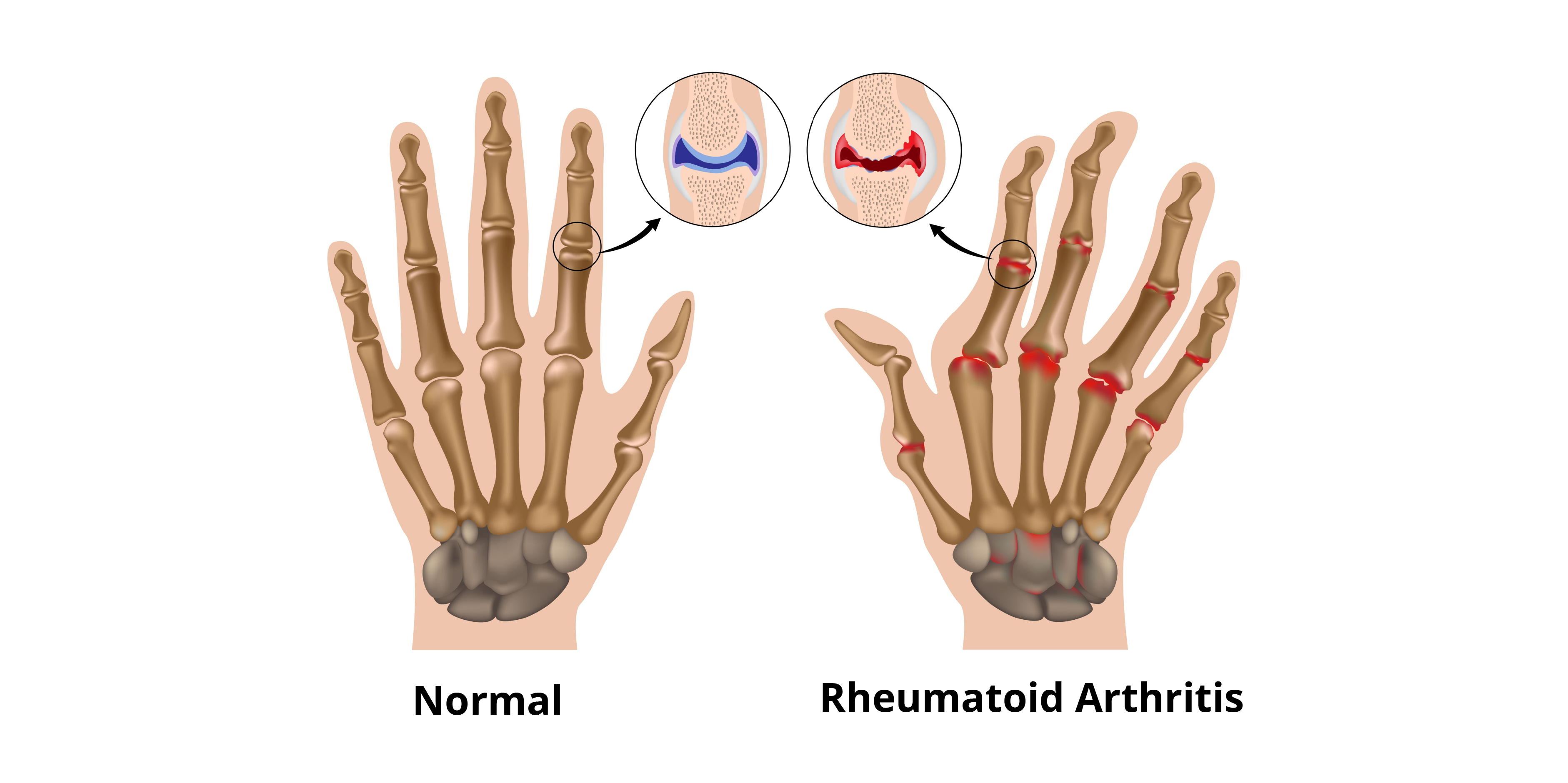Content on this page:
Overview
History and Physical Examination
Diagnosis
Management
Content:
Overview
History and Physical Examination
Diagnosis
Management
Overview
History and Physical Examination
Diagnosis
Management
Overview
Rheumatoid Arthritis is a kind of arthritis that has
specific characteristics that you can learn more about in the Introduction section. Information about
the prevalence of this disease can be found in the Epidemiology section.
Rheumatoid arthritis is believed to be due to genetic and environmental factors. The Pathophysiology section discussed the development of this kind of arthritis.

There are patient and environmental risk factors involved in the development of rheumatoid arthritis, and these are enumerated in the Risk Factors section.
Based on the new classification criteria, a patient can be diagnosed with rheumatoid arthritis based on the number and site of involved joints, serological and acute phase reactants abnormalities, and symptom duration. Rheumatoid arthritis may also be classified based on the severity of the disease. A detailed discussion of these points can be viewed in the Classification section.
Rheumatoid arthritis is believed to be due to genetic and environmental factors. The Pathophysiology section discussed the development of this kind of arthritis.

There are patient and environmental risk factors involved in the development of rheumatoid arthritis, and these are enumerated in the Risk Factors section.
Based on the new classification criteria, a patient can be diagnosed with rheumatoid arthritis based on the number and site of involved joints, serological and acute phase reactants abnormalities, and symptom duration. Rheumatoid arthritis may also be classified based on the severity of the disease. A detailed discussion of these points can be viewed in the Classification section.
History and Physical Examination
There are specific clinical signs and symptoms of rheumatoid
arthritis. In general, patients with rheumatoid arthritis present with joint
pain and/or swelling, morning stiffness lasting for ≥1 hour, myalgia, fatigue,
weight loss, low-grade fever, and depression. To know more, see the Clinical Presentation, History and Physical Examination
section.
Diagnosis
The Laboratory Tests and Ancillaries
and Imaging sections discuss what
tests can be done to help with the diagnosis of rheumatoid arthritis.
Systemic diseases and connective tissue syndromes can mimic rheumatoid arthritis and the Differential Diagnosis section has enumerated them.
Systemic diseases and connective tissue syndromes can mimic rheumatoid arthritis and the Differential Diagnosis section has enumerated them.
Management
In the Evaluation
section, Disease Activity Scoring and Clinical Remission are discussed.
The first goal of therapy is to achieve sustained clinical and radiological remission of the disease. The Principles of Therapy section enumerated the other treatment goals and management strategies used for rheumatoid arthritis.
The Pharmacological Therapy section contains an extensive discussion on the treatment options that include the different DMARD medications, drug combination strategies and adjunctive therapies.
Surgery is generally indicated in patients who suffer from an unacceptable level of pain with activity or at rest in patients with severe rheumatoid arthritis after failure of all nonsurgical approaches to rheumatoid arthritis management. Different surgical interventions that can be done to patients that have this indication in managing rheumatoid arthritis are discussed in the Surgery section.
The Lifestyle Modifications (eg exercise, nutrition therapy, weight management) section discussed the ways to help in the management of rheumatoid arthritis.
Educating the patient or caregiver about the disease is also an important aspect in the management of rheumatoid arthritis. Refer to the Patient Education section for further details.
Different non-pharmacological modalities eg physical therapy, occupational therapy, integrative interventions and psychological therapies in managing rheumatoid arthritis are discussed in detail in the Nonpharmacological section.
Disease activity and the toxic effects of drugs used in the management of rheumatoid arthritis should be measured and documented regularly. Information in assessing the effect of therapy, drug toxicity and other factors is in the Monitoring section.
Prognostic factors that may contribute to the poor outcome of the disease can be seen in the Prognosis section.
The first goal of therapy is to achieve sustained clinical and radiological remission of the disease. The Principles of Therapy section enumerated the other treatment goals and management strategies used for rheumatoid arthritis.
The Pharmacological Therapy section contains an extensive discussion on the treatment options that include the different DMARD medications, drug combination strategies and adjunctive therapies.
Surgery is generally indicated in patients who suffer from an unacceptable level of pain with activity or at rest in patients with severe rheumatoid arthritis after failure of all nonsurgical approaches to rheumatoid arthritis management. Different surgical interventions that can be done to patients that have this indication in managing rheumatoid arthritis are discussed in the Surgery section.
The Lifestyle Modifications (eg exercise, nutrition therapy, weight management) section discussed the ways to help in the management of rheumatoid arthritis.
Educating the patient or caregiver about the disease is also an important aspect in the management of rheumatoid arthritis. Refer to the Patient Education section for further details.
Different non-pharmacological modalities eg physical therapy, occupational therapy, integrative interventions and psychological therapies in managing rheumatoid arthritis are discussed in detail in the Nonpharmacological section.
Disease activity and the toxic effects of drugs used in the management of rheumatoid arthritis should be measured and documented regularly. Information in assessing the effect of therapy, drug toxicity and other factors is in the Monitoring section.
Prognostic factors that may contribute to the poor outcome of the disease can be seen in the Prognosis section.

